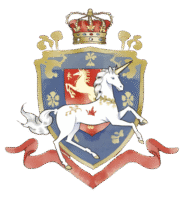In recent years, artificial intelligence has emerged as a groundbreaking tool in the realm of creativity, reshaping how we perceive and produce art. From generative design to machine learning-based creation, AI has introduced a myriad of techniques and styles that not only challenge traditional art forms but also expand the horizons of creative expression. Here, we delve into ten basic categories of AI-generated art, illustrating the different techniques and styles while highlighting the diverse approaches AI brings to the artistic landscape.
1. Generative Adversarial Networks (GANs)
At the forefront of AI art is the use of Generative Adversarial Networks (GANs). This technique involves two neural networks—the generator and the discriminator—working in tandem to create images. The generator produces images, while the discriminator evaluates their authenticity. This back-and-forth process results in highly detailed and realistic images. GANs have been used to create everything from surreal landscapes to hyper-realistic portraits, showcasing AI’s ability to blend imagination with technical prowess.
2. Style Transfer
Style transfer leverages deep learning to apply the aesthetic of one image to another. By separating content and style, this technique allows artists to merge their photographs with the stylistic elements of famous paintings or unique textures. For example, one might take a modern photo and infuse it with the brushstrokes of Van Gogh or the color palette of Monet. This approach not only demonstrates AI’s capability to reinterpret visual elements but also opens up endless possibilities for personal expression.
3. Algorithmic Art
Algorithmic art is created through a series of programmed instructions that dictate how visual elements are manipulated. Artists write code to generate patterns, shapes, and compositions, resulting in works that often have an organic or mathematical quality. This technique emphasizes the relationship between art and technology, as artists harness algorithms to explore concepts of randomness and order, creating unique visual experiences.
4. Neural Networks and Deep Learning
Neural networks, particularly deep learning models, can analyze vast datasets of images to understand visual patterns and styles. Artists can train these models on specific genres, enabling the AI to produce new artworks that reflect those influences. This method highlights the capacity of AI to learn and evolve, mirroring the growth of human creativity while introducing novel interpretations.
5. Procedural Generation
Procedural generation refers to using algorithms to create data algorithmically rather than manually. In art, this can mean generating entire environments or intricate designs based on specific parameters. It’s widely used in video game design, but it also finds a place in fine art, where artists can create entire worlds or landscapes with a few lines of code, resulting in works that are infinitely variable and dynamic.
6. Data-Driven Art
This category uses data as a central component in the creative process. Artists can visualize complex datasets, transforming numbers into compelling visual narratives. For instance, an artist might represent climate change data through a series of striking infographics or abstract images that convey urgency. This approach emphasizes the intersection of art and information, utilizing aesthetics to engage audiences in important global conversations.
7. Text-to-Image Generation
With advancements in natural language processing, AI can now generate images based on textual descriptions. This technique allows artists and creators to input detailed prompts, resulting in unique artworks that may not have been conceived otherwise. It democratizes the creative process, enabling those without traditional artistic skills to produce visually stunning pieces simply by describing their vision.
8. Interactive Art
AI also facilitates interactive art installations, where the audience becomes part of the creative process. Through sensors and machine learning, artworks can respond to viewers’ movements, emotions, or even facial expressions. This interactivity not only engages the audience in real-time but also creates a dialogue between the viewer and the artwork, emphasizing the dynamic nature of contemporary art.
9. Music and Sound Art
AI-generated art isn’t limited to visuals; it extends to sound and music as well. AI can compose music by learning from existing pieces or even generating soundscapes based on specific themes or emotions. This branch of AI art showcases the technology’s versatility, allowing it to collaborate with musicians and sound artists to create innovative auditory experiences that resonate on multiple levels.
10. Augmented and Virtual Reality (AR/VR)
Lastly, AI plays a significant role in augmented and virtual reality art, where digital elements enhance or create immersive environments. Artists can design interactive 3D spaces that respond to user input, providing an experience that blends the physical and virtual worlds. This category exemplifies the future of art, as it allows for exploration and engagement in ways that traditional mediums cannot replicate.
Conclusion
As we explore these ten categories of AI-generated art, it becomes evident that artificial intelligence is not merely a tool but a collaborator in the creative process. By harnessing the capabilities of AI, artists are pushing the boundaries of traditional art forms, discovering new styles and techniques that challenge our perceptions of creativity. The intersection of technology and artistry is continuously evolving, showcasing a future where the possibilities are as limitless as the imagination itself. Embracing AI as a partner in creativity opens doors to unprecedented expressions of art, inviting everyone to explore and contribute to this dynamic landscape.

